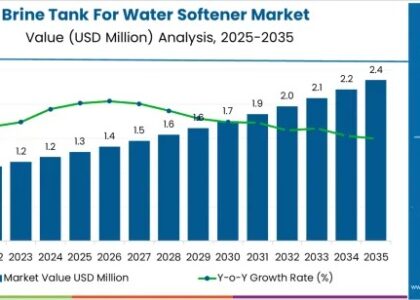The global soy-based food market, valued at USD 15.8 billion in 2022, is poised for significant growth, projected to reach USD 27.1 billion by 2032. This impressive rise, at a compound annual growth rate (CAGR) of 5.8% from 2022 to 2032, highlights the growing demand and versatile applications of soy-based foods. According to a study by Future Market Insights, the soy-based food market is expected to exhibit a steady growth rate, outpacing the 3.7% CAGR recorded between 2017 and 2021.
Key Drivers of Market Growth
- Health Benefits and Nutritional Value: Soy-based foods, including soymilk, tofu, soybeans, soybean oil, and soy cheese, are celebrated for their high protein content and nutritional value. These products cater to contemporary taste preferences and are essential for vegetarian consumers. Their ability to reduce cardiovascular risk, regulate sexual hormones, and support thyroid function has significantly driven market demand.
- Shifting Consumer Preferences: The prevalence of cardiac illnesses has led health-conscious consumers to seek low-cholesterol, heart-friendly alternatives to traditional cooking oils. This shift has positively impacted the soy-based food market, despite competition from substitutes like olive oil. Producers are expanding production capacities to offer competitively priced products, meeting the evolving demands of health-conscious consumers.
- Rising Popularity of Meat Substitutes: The versatility of soy-based foods in meat analog production has driven market growth. Researchers have highlighted the benefits of soy-based foods in reducing cardiovascular risks, balancing hormones, and supporting thyroid health. These trends have contributed to a favorable global market outlook for soy-based foods.
Regional Market Insights
- North America: North America continues to lead in soy-based food demand, with the USA generating significant quantities of soy oil. The country’s strong consumer demand for soy oil and soy-based products is expected to drive market growth. The presence of leading companies and a robust supply chain further supports this trend.
- Asia Pacific: China, holding 37.6% of the total soy-based food market share, is projected to increase its share to 40.3% by 2032. Historical consumption patterns and a predominantly vegetarian population have made soy-based foods integral to the region’s diet. Japan and Korea are also emerging as lucrative markets, with Japan exhibiting a notable growth rate of 5.5% over the forecast period.
- Europe: European countries have embraced soy-based foods due to increasing awareness of their nutritional benefits. The region’s adoption of soy-based products as dietary staples has contributed to market expansion, with a growing number of consumers incorporating these foods into their daily diets.
Innovations and Start-up Contributions
The competitive landscape of the soy-based food market is characterized by significant contributions from start-ups and established players alike. Companies such as Nuritas and Brightseed are leveraging artificial intelligence and genomics to discover novel functional chemicals, driving innovation in the market.
Leading Market Players
Prominent companies in the soy-based food market include:
- Nestle S.A.
- Danone SA
- Solbar Ltd.
- Cargill Inc.
- ADM Company
These companies are focusing on introducing and innovating a wide variety of products to increase their consumer base and gain a competitive advantage. For instance, Danone’s acquisition of Earth Island, a producer of vegan and plant-based goods, is aimed at strengthening its plant-based business.
Gain Immediate Access to Detailed Market Insights Purchase Now
Future Market Trends
- Meat Products: The high digestibility and nutritional value of soy-based foods make them suitable ingredients for meat-based recipes. Their inclusion enhances flavor and digestibility, driving demand for soy-based foods in meat products.
- Indirect Sales Channels: The expansion of markets for meat products, bakery items, and exercise supplements has boosted the indirect sales channel for soy-based foods. This trend is expected to continue, with high growth projected through the forecast period.
Global Soy-based Food by Category
By Product Type, Global Soy-based Food is segmented as:
- Meat Substitutes
- Textured Vegetable Protein
- Tofu
- Tempeh
- Non- dairy Yogurt
- Non-dairy Spread
- Non- dairy Ice Cream
- Non- dairy Cheese
By Application, Global Soy-based Food is segmented as:
- Meat Products
- Dairy Products
- Bakery and Confectionery
- Functional Food
- Instant Food
By Distribution Channel, Global Soy-based Food is segmented as:
- Direct
- Indirect
- Hypermarkets/Supermarkets
- Convenience Store
- Specialty Stores
- Independent Retailers
- Online Retailers
By Region, Global Soy-based Food is segmented as:
- North America
- Latin America
- Europe
- East Asia
- South Asia
- Oceania
- Middle East & Africa
About Future Market Insights (FMI)
Future Market Insights, Inc. (ESOMAR certified, recipient of the Stevie Award, and a member of the Greater New York Chamber of Commerce) offers profound insights into the driving factors that are boosting demand in the market. FMI stands as the leading global provider of market intelligence, advisory services, consulting, and events for the Packaging, Food and Beverage, Consumer Technology, Healthcare, Industrial, and Chemicals markets. With a vast team of over 400 analysts worldwide, FMI provides global, regional, and local expertise on diverse domains and industry trends across more than 110 countries.
Contact US:
Future Market Insights Inc.
Christiana Corporate, 200 Continental Drive,
Suite 401, Newark, Delaware – 19713, USA
T: +1-347-918-3531
For Sales Enquiries: sales@futuremarketinsights.com
Website: https://www.futuremarketinsights.com
LinkedIn| Twitter| Blogs | YouTube





